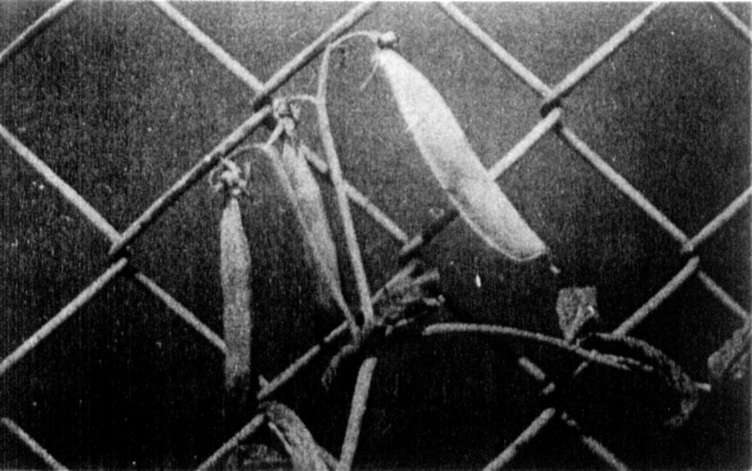DETERMINATE GROWTH (det) IN PISUM; A NEW MUTANT GENE
ON CHROMOSOME 7
Swiecicki, W. K. Plant Breeding Station, Wiatrowo, Poland
A characteristic feature of the growth and development of
legume plants is the lack of clear demarcation between the vegeta-
tive and generative phases. Conversely, in cereals the growth of
the vegetative mass ceases at the time of flowering and assimi-
lates are destined for filling grains. A similar plant model for
legumes wherein there is a clear end of the vegetative growth may
result in assimilates being transported to seeds and resulting in
earlier, more uniform maturity with possibly higher seed yield.
Other mechanisms of changing the vegetative/reproductive relation-
ships are known. In white lupine, for example, the cultivar 'Wat'
sheds its leaves in the full, green pod stage. Moreover, narrow-
-leaved, unbranched genotypes of white and yellow lupine have been
selected, i.e. a single main stem develops with the inflorescence
on the top. Additionally, nodes with single flowers appear in-
stead of branches (3). The field bean (Vicia faba), like the pea,
produces inflorescences on successive nodes along the stem axis.
But a mutation type with determinate growth, controlled by a sin-
gle gene, has been found (I); the stem is terminated with an in-
florescence.
A gene with similar effect was found in pea in 1980 after
seed treatment of line Wt 3527 with a combined dose 200r Nf +
0.014% NEU (2,A) and reported for the first time at the Eucarpia
meeting, Section for Gene Resources (5). Plants are characterized
by an inflorescence at the top of the stem and a small number of
flowering nodes (Fig. 1). Sometimes apical flowers are abnormal
(open) but fertile. The mutant was assigned catalog number
Wt 16100 in the Wiatrowo genebank.
The line is phenotypically similar to a mutant collected at
John Innes Institute (Matthews, personal communication). In the
locus/allelism test (Wt 16100 x JI 1358) the F1 plants were of
the determinate growth type, indicating that both mutants are con-
trolled by the same gene.
For the linkage test, tester line WL 1238 was crossed with
mutant Wt L6100. F1 plants were normal and the F2 segregation
showed monogenic, recessive inheritance (Table 1A). The suggested
symbol for this character is det (determinate growth).
Dihybrid segregation showed linkage between Det and markers
on chromosome 7, viz. R and Tl (Table IB). Further analyses for
mapping with selected testerlines for chromosome 7 are in pro-
gress.
